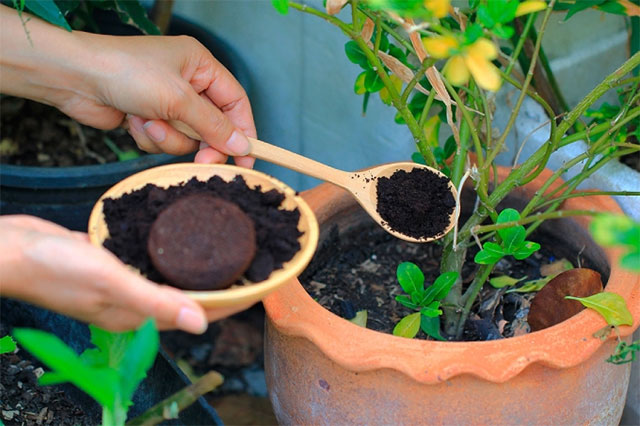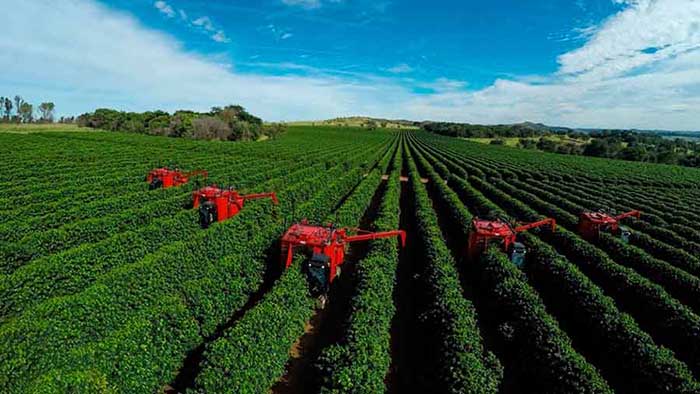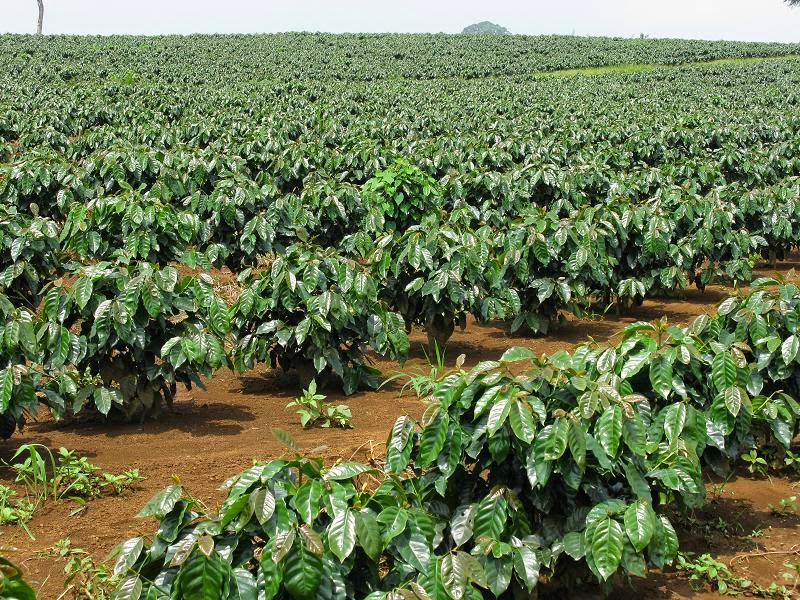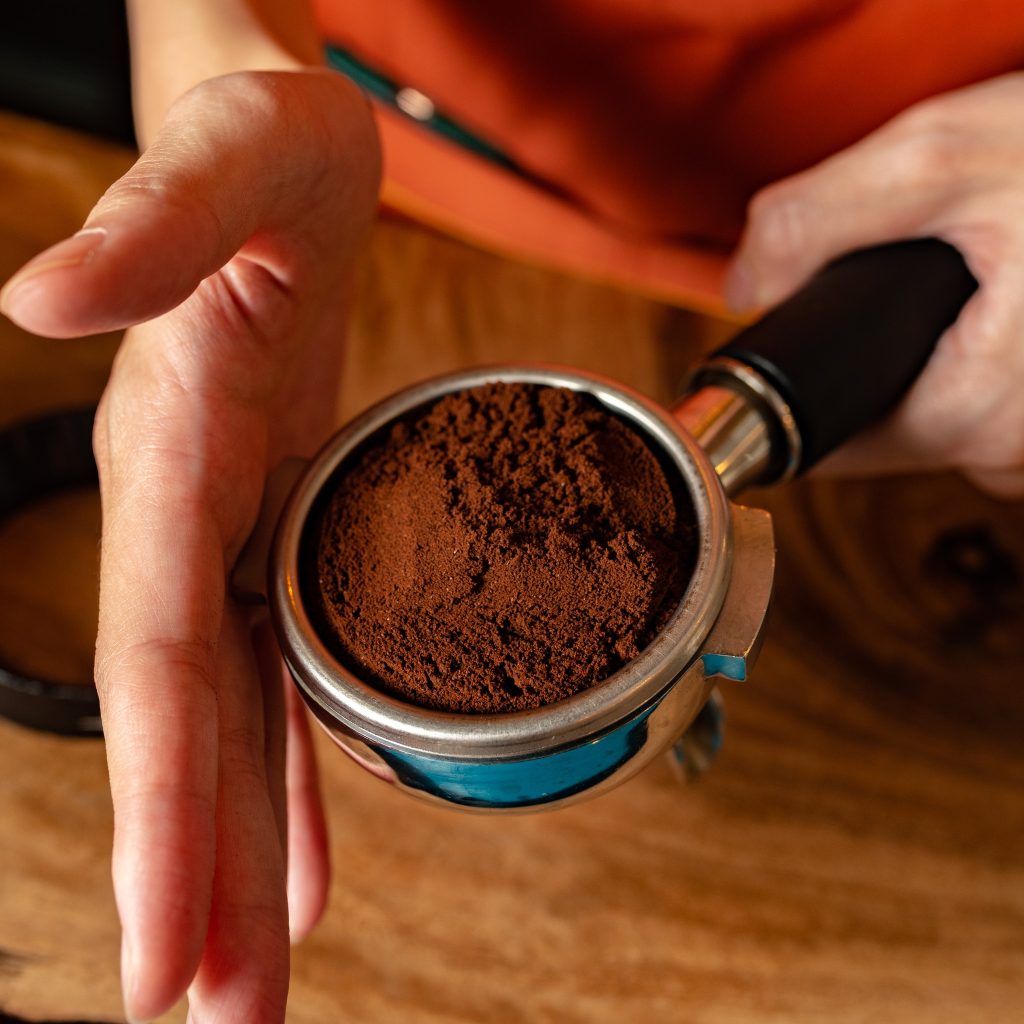Coffee grounds are a popular choice for gardeners looking to provide their plants with natural, organic nutrients. Not only do they contain essential minerals like potassium, phosphorus, and trace elements such as calcium, iron, zinc, and magnesium, but they also offer an eco-friendly way to recycle kitchen waste. However, improper use of coffee grounds can pose risks to your plants, particularly due to the presence of caffeine, which may hinder growth. This guide will walk you through the benefits and drawbacks of using it as fertilizer and explain how to maximize their benefits while avoiding potential harm.

The Nutritional Value of Coffee Grounds for Plants
1. Rich in Essential Nutrients
Coffee grounds are packed with a variety of nutrients that are essential for plant growth. They contain proteins, oils, carbohydrates, and minerals like potassium and phosphorus, which are necessary for healthy root development and flower production.
2. Improves Soil Structure and Fertility

Incorporating coffee grounds into compost or directly into garden soil can improve soil structure by adding organic matter. Organic matter enhances the soil’s water retention capacity and helps promote better drainage and aeration. This creates a more balanced environment for plant roots, allowing them to access water and nutrients more efficiently. When coffee grounds are composted, they further decompose into humus, which helps improve the fertility of the soil by providing plants with slow-release nutrients.
3. Natural Pest Deterrent
Caffeine, a compound found naturally in coffee, can act as a natural insecticide. It disrupts the nervous system of insects, deterring them from feeding on plants or laying eggs. Ants, slugs, and snails are particularly sensitive to caffeine, making coffee grounds an effective and eco-friendly method for controlling these pests.
4. Encourages Beneficial Organisms

In addition to repelling harmful pests, coffee grounds can attract beneficial organisms like earthworms. Earthworms are essential for soil health as they aerate the soil and break down organic matter, converting it into nutrient-rich castings that enhance soil fertility.
The Drawbacks of Using Coffee Grounds on Plants
1. Caffeine Content Can Be Harmful
Caffeine, while effective at deterring pests, can also negatively affect plants. In large quantities, caffeine can inhibit plant growth by disrupting biological processes such as photosynthesis and nutrient uptake. It can also lower the pH of the soil, making it more acidic, which may be detrimental to plants that prefer neutral or alkaline conditions. Therefore, it’s essential to use coffee grounds in moderation and avoid over-applying them to sensitive plants.
2. Risk of Mold Growth
Coffee grounds are moist and nutrient-rich, making them susceptible to mold growth when applied directly to the soil without composting. Mold can spread quickly, particularly in damp conditions, and may lead to root rot or other fungal infections in plants. To minimize the risk of mold, it’s best to compost coffee grounds before adding them to your garden.
3. Potential Nitrogen Imbalance
Although coffee grounds are a good source of organic material, they contain a high level of nitrogen. If used excessively, they can create an imbalance in the soil’s nitrogen-to-carbon ratio, leading to issues with plant growth. To avoid this, it’s important to balance coffee grounds with other carbon-rich materials like dried leaves, straw, or wood chips when composting.
How to Use Coffee Grounds Safely as Fertilizer
1. Composting Process
Composting is the most effective way to prepare coffee grounds for use in the garden. The composting process breaks down the organic material, reducing the caffeine content and converting nutrients into a form that plants can absorb more easily. Composting also helps eliminate the risk of mold growth and balances the nitrogen content by allowing it to mix with carbon-rich materials.
Steps for Composting Coffee Grounds:

- Collect used coffee grounds from your kitchen or local café.
- Combine it with carbon-rich materials like dried leaves, fruit peels, or grass clippings. A balanced compost pile should contain about two-thirds carbon-rich materials to one-third nitrogen-rich materials like coffee grounds.
- Keep the compost pile in a cool, well-ventilated location, ensuring it remains moist but not overly wet.
- Turn the pile regularly to aerate it and promote the decomposition process.
After several weeks to a few months, the compost will be ready to use. The finished product will be dark, crumbly, and free from any strong odors.
2. Mix Compost with Soil
Once the compost is ready, it can be mixed into garden beds or used as a top dressing around plants. This enriches the soil with organic matter and nutrients, enhancing its fertility. Incorporating composted coffee grounds into the soil improves water retention, promotes root growth, and provides plants with a steady supply of nutrients throughout the growing season.
3. Mulching with Coffee Grounds
In addition to composting, coffee grounds can be used as a mulch to help retain soil moisture and suppress weeds. Spread a thin layer of coffee grounds around plants, being careful not to pile them too thickly, as this can create a barrier that prevents water and air from reaching the roots.
Conclusion
Coffee grounds are a valuable, eco-friendly resource for gardeners when used correctly. They provide essential nutrients, improve soil structure, and repel pests while attracting beneficial organisms like earthworms. However, due to the presence of caffeine and the potential for mold growth, it’s important to use coffee grounds cautiously. Composting them before application is the best way to maximize their benefits while minimizing risks. By following these guidelines, you can safely nourish your plants and improve the health of your garden soil.
